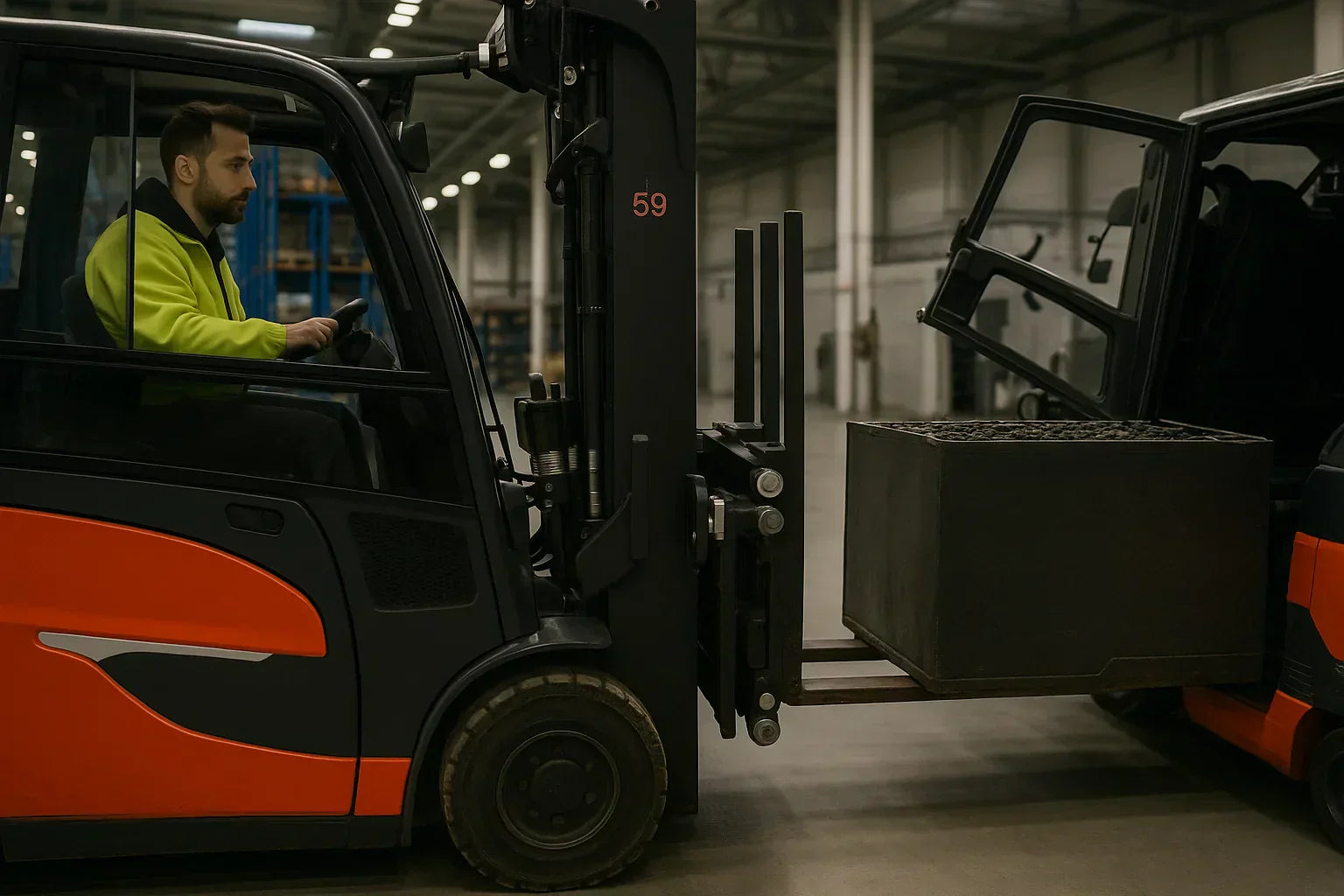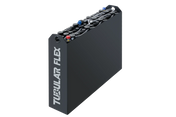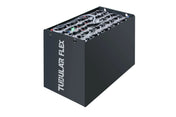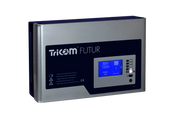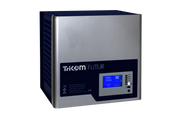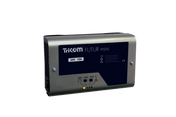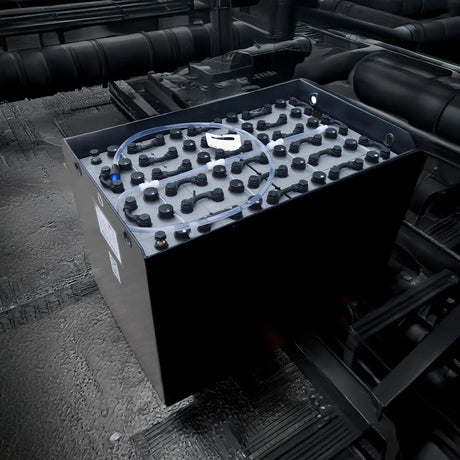Replacing a forklift battery is one of the regular maintenance tasks for electrically powered industrial trucks. Whether due to natural aging, cell damage, or multi-shift operation, replacement must always be carried out properly, safely, and with suitable tools to avoid damage or accidents.
In this article, you will learn where the battery is located in common models , how to replace it properly, and what you should pay attention to in order to minimize risks and downtime.
Where is the battery located in the forklift?
In most electric forklifts, the battery is located centrally in the vehicle frame—usually under the driver's seat or in a hinged battery cover. The exact location depends on the manufacturer and model.
Example: Linde electric forklift
On Linde forklifts (e.g., E14–E35 series), the battery is located under the driver's seat. The seat can be folded up or swiveled sideways. Some models feature side-mounted battery removal—ideal for quick battery changes in multi-shift operations.
Tip: The operator's manual for the respective forklift model contains precise information on battery accessibility and the prescribed removal method.
Preparation: Safety first
What you need to consider before changing the battery
Before starting the battery replacement, the following points must be ensured:
- Switch off the forklift and secure it against rolling away
- Disconnect charger and measure voltage
- Wear personal protective equipment (PPE): acid-resistant gloves (EN 374 Type A | K), face protection (EN 166 F) and acid-resistant work clothing
- Provide tools and lifting aids – battery crossbeam, hoist, insulated tools
- Suitable work area with stable floor, ventilation and free access
Caution: When handling lead-acid batteries, there is a risk of burns, explosion, and fire. Open flames, sparks, and metallic short circuits must be avoided at all costs.
Step-by-step instructions: Changing a forklift battery
1. Access the battery
Fold or unlock the seat or battery cover to fully expose the battery.
2. Turn off the main switch (battery isolator)
If available, disconnect the battery using the main switch before disconnecting any cables.
3. Disconnect the battery connector
Carefully pull the connector off the battery cable without putting any strain on the wires.
4. Remove terminal covers and disconnect connections
Disconnect the negative terminal first, then the positive terminal to avoid short circuits. For M8 pole screws, a tightening torque of 20–25 Nm applies to ensure optimal contact and corrosion protection.
5. Lift out the battery
Use a battery traverse with a load capacity of at least 1.5 t and safety load hooks in accordance with EN 289-1 . Make sure that the lifting is horizontal, that it is securely held at the designated eyelets and that there is sufficient distance from the edges of the housing.
6. Insert new or reconditioned battery
Place the new or reconditioned battery precisely in the holder. Do not tilt or tilt it. Clean the pole surfaces and, if necessary, apply a thin layer of pole grease to prevent corrosion.
7. Install the connections in reverse order
Connect the positive terminal first, then the negative terminal . Then snap the battery connector into place and reattach the terminal covers. Recheck torque (20–25 Nm for M8).
8. Secure the battery, close the seat/cover
Check that the brackets are correctly locked and that the cables are laid without tension.
9. Perform functional test
Start the forklift and check that the voltage is correct, that no error messages appear and that the battery is recognized on the display.
Special instructions for lithium-ion batteries
- No gas leakage – special ventilation usually not required
- Monitoring via BMS (Battery Management System)
- Different connector and communication interfaces depending on the manufacturer
- Replacement only by trained personnel in accordance with manufacturer approval
Dealing with acid leakage or damage
If electrolyte leaks, act immediately:
- Cordon off the area, put on PPE
- Neutralize spilled acid with sodium carbonate (soda)
- Collect neutralized liquid in acid-resistant containers
- Disposal via approved disposal companies as hazardous material (ADR Class 8)
Return and disposal of old batteries
Used batteries must not be disposed of in household waste. According to BattG § 15-17, there is an obligation to take back batteries via certified collection or take-back systems. Transport takes place in acid-resistant UN-approved containers with appropriate marking according to ADR Class 8 .
When does it make sense to change the battery?
- Battery no longer reaches the required capacity
- Recurring error messages or loading interruptions
- Forklift regularly fails under load
- Regeneration is no longer technically possible
As an alternative to purchasing new batteries , HK Handels GmbH offers tested, regenerated forklift batteries – economical, safe and sustainable.
Conclusion: Professional battery replacement protects people and machines
Changing a battery correctly requires care, safety awareness, and the right equipment. If you proceed in a structured manner and observe the prescribed torques and protective measures, you can minimize downtime and significantly extend the service life of the battery. If you are unsure or have a larger fleet, we recommend seeking support from a certified specialist company .
HK Handels GmbH offers you high-quality batteries, capacity tests , regeneration and a complete on-site replacement service – including disposal according to BattG.

